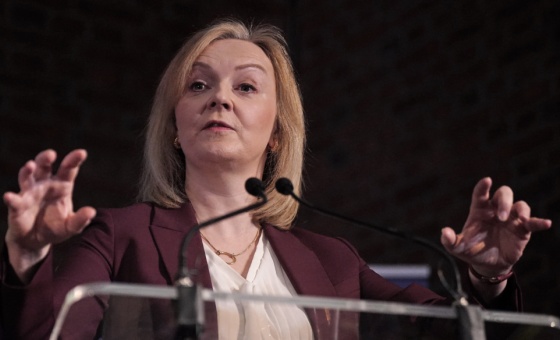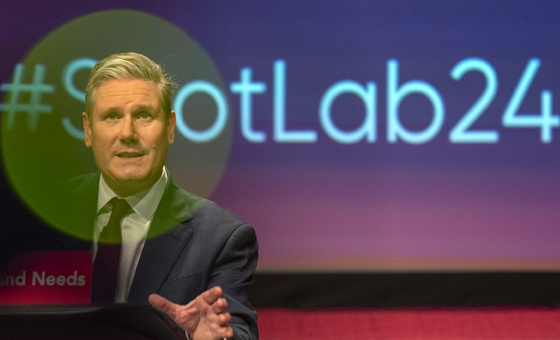This is the last article you can read this month
You can read more article this month
You can read more articles this month
Sorry your limit is up for this month
Reset on:
Please help support the Morning Star by subscribing here
THERE are many money myths that are used as intellectual cover to maintain a financial system that benefits an elite at the expense of the majority.
These orthodoxies are repeated ad nauseam in most mainstream media and are rarely questioned in public discourse. Here are three:
Final-salary pension schemes are unaffordable
This has been the pretext for millions of working people to be denied the ability to receive a decent pension after a lifetime of work.
Thus, in recent years many final-salary pension schemes have been closed and workers shifted into “defined contribution” ones.
This led to many companies paying less into their workers’ pensions while paying out money in dividends to shareholders.
Workers were also forced to take all the risk that came with investing their money into the stock and bond markets.
As a result, we now have millions of people who have no way of knowing what pension they are likely to end up with when they retire. A stock market crash could send them into poverty through no fault of their own.
The main argument for final-salary schemes being unaffordable is based on a calculation that is itself flawed.
These pension schemes use government bond (gilt) yields as an indicator of the likely return they can get over the long term set against their liabilities (the total amount of money they are going to need to pay out all the pensions they owe to all the people in their scheme).
Thus, the more gilt yields fall (as they have been doing for years now) the more money they calculate they will need to have right now in order to meet future obligations. Hence, lower gilt yields have led to increased pension scheme deficits.
However, using gilt yields is problematic for two reasons.
Quantitative easing (QE) artificially reduced bond yields. The £445 billion created by the Bank of England under the QE scheme led to the manipulation of financial asset prices on a grand scale. All but £10bn of that money, which was created digitally, was used to purchase gilts from big banks, who in turn used the money they received for these bonds to buy more financial assets, bonds, shares and property.
Not only did this artificially inflate the price of all these asset classes but the resulting rise in bond prices reduced bond yields, artificially increasing the “pensions gap.”
In addition, bond yields aren’t the best measure to use. Using a diversified portfolio of assets could produce a higher yield and, by effectively reducing the pensions gap, illustrate that final-salary schemes are more affordable than most believe.
In short, market manipulation has effectively reduced the pensions of millions even while putting money into the hands of a minority of finance professionals and advisers.
Rising house prices are due to a shortage of housing
In reality, the two are not correlated. Price rises have been driven by mortgage debt, hot money from overseas and speculation.
While London prices have been turbocharged by hot money from overseas (property is one of the easiest ways to launder corrupt money), the main reason for the rise in house prices over the past 20 years has been banks creating money and lending it out to those seeking mortgages at an accelerating rate.
As Professor Steve Keen at Kingston University has long argued, rising house prices have been driven by an accelerating level of mortgage debt. Now that it is no longer accelerating house prices are starting to fall.
Certainly, it would be no bad thing for most people if house prices did fall much further. It would, for instance, allow first-timers onto the housing ladder without the need to take out onerous 30-year-plus mortgages.
It would also mean people spent less money on mortgages and rent. For those wanting to trade up it would also be better as the price differentials would also fall.
Unfortunately, property has become a means of speculation rather than a place to live. Many buy-to-letters have invested in this highly illiquid asset believing that it will keep on rising. It can’t.
At some stage — and it appears to be happening now — the rate of increase in mortgage debt slows and property prices fall.
Of course, how low it falls will depend on the state of the economy as well (though, as we appear to be heading into recession, the prospects for a large fall are increasing).
Fiscal austerity was needed
Short-sighted, ideologically driven, attempts to reduce government borrowing under the Conservative government from 2010 backfired.
It shrunk Britain’s economic growth, thereby reducing tax receipts, while also increasing the national debt burden.
Almost a decade of austerity has hit GDP per person by £1,500 a year, according to new analysis from the New Economics Foundation (NEF), using figures from the Office for Budget Responsibility.
The NEF argues that the the isolated effects of government austerity policies reduced GDP growth every single year since 2010.
This has suppressed the level of GDP by £99.4bn in 2018/19. (Cumulatively, it’s also arguable that roughly £573bn was wiped off Britain’s GDP over those nine years — though the effects may have been mitigated to a small extent by the Bank of England’s attempts to manage interest rates over that period).
Furthermore, as Societe Generale global strategist Albert Edwards recently pointed out, massive fiscal retrenchment by the government since the June 2016 referendum has reduced Britain’s GDP by 2 per cent — or £800 million a week of lost income.
It has been incorrectly blamed on Brexit, but the real cause was that Britain’s cyclically adjusted, primary fiscal deficit (that is, excluding interest payments) declined by around 1.25 per cent in 2016 and again in 2017.
And where has all the needless austerity left the British economy? According to the Office of National Statistics, at the end of March 2018, the UK national debt (public sector net debt) was just over £1.8 trillion, equivalent to 83.1 per cent of GDP.
When the Conservative Party came into power in May 2010 it was £1.03tn, equivalent to 65.2 per cent of GDP. (Thus, Britain is much more in debt than under the past Labour government, which had to deal with the 2008 global financial crisis and resulting recession).
Of course, these dry figures naturally omit the human suffering that has been caused by needless austerity and economic mismanagement.
Job insecurity, poor wages, schools inadequately funded, social services reduced, NHS underfunding and benefit cuts and delays have been the result.
Perhaps the politicians who’ve inflicted this misery on us should be made to eat their own cooking?
Imagine the Chancellor being made to live with a family for a month to experience it at first hand. If filmed that would be reality TV at its finest, “What’s For Dinner, Chancellor?” — all proceeds to the Britain’s growth industry: foodbanks, which dispensed a record 1.6m emergency three-day emergency food parcels over the past year.
Flights of fancy aside, we need to start questioning the orthodox assumptions that underlie how our economy is run.
For too long the economy has been run to serve the interests of a relatively small minority.
Ignorance and poor financial education made it easier to hide the truth from us. It’s vital we now create an intellectual space to debate these issues among a population hungry for the truth.
One positive move would be for mainstream television channels, such as the BBC, to be encouraged to introduce some prime-time programmes that discuss such matters in-depth before the watershed.











